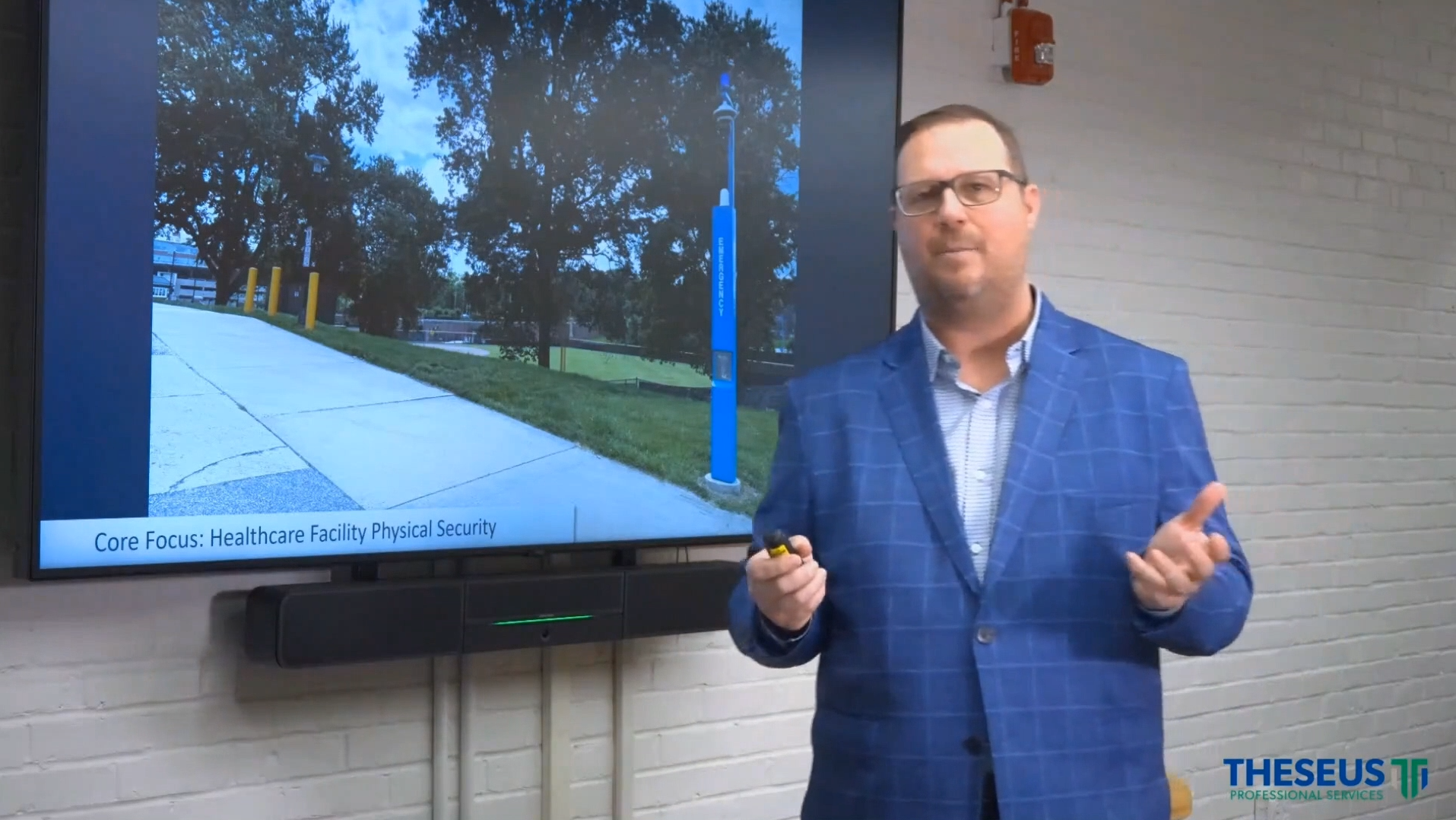3 min read
Enhancing Security Through Visitor Communication and Management
![]() Theseus Team
:
Jun 11, 2025 8:23:54 AM
Theseus Team
:
Jun 11, 2025 8:23:54 AM

Whether in healthcare, corporate, education, or industrial security environments—visitor communication plays a crucial role in the overall safety strategy. The key to a secure and welcoming environment lies not only in physical access controls, but in ensuring that communication systems support visitors during business hours and in after-hours scenarios when the human presence may be limited.
This article explores a layered approach to visitor communication, with insights originally shared in the Healthcare Ring of Security webinar—but with expanded examples to benefit professionals across all industries.
Why Visitor Communication Systems Matter
Visitors don’t always arrive during peak business hours or through the main entrance. Sometimes, they approach the facility through loading docks, side doors, parking garages, or pedestrian walkways. In those cases, having a well-designed system for communication—especially when there is no staff nearby—is essential for safety, efficiency, and experience.
At the heart of an effective visitor communication system are three key technologies:
-
Video Intercoms
-
Audio-Only Intercoms
-
Emergency Call Boxes
Each has its place and purpose depending on the environment and risk level.
Video Intercoms: Trust Through Visual Verification
One of the most powerful tools in visitor management is the video intercom. These are typically deployed at secured entrances, loading docks, and after-hours access points. Video intercoms allow operators to:
-
Verify identities visually, not just verbally.
-
Confirm company affiliation (e.g., spotting a UPS uniform).
-
Prevent unauthorized access to sensitive areas.
In a healthcare setting, this might be verifying that a third-party delivery driver is cleared to access a pharmaceutical drop-off zone.
In a corporate campus or data center, this same concept applies to contractors or vendors arriving for overnight maintenance. Visual verification protects the facility from unauthorized intrusion under the guise of routine deliveries.
Audio Intercoms: Simple Communication, Fast Redirection
Not every interaction requires video. Audio-only intercoms are ideal for:
-
Wayfinding assistance (“How do I get to Building C?”)
-
After-hours redirection (“This door is closed; use the main entrance.”)
-
General inquiries from visitors, contractors, or delivery personnel.
They work well in places like:
-
Parking garages
-
Service hallways
-
Remote building entrances
-
Multi-tenant industrial facilities
Even in a K-12 or higher education campus, audio intercoms provide students and visitors with a lifeline to ask for directions or support—without requiring a full security presence at every door.
Emergency Call Boxes: A Lifeline in Isolated Areas
Emergency call boxes are typically thought of for high-risk or isolated areas such as:
-
Campus walkways
-
Stairwells
-
Parking structures
-
Industrial yards or large logistics facilities
While these devices are designed for emergencies (e.g., a person feeling unsafe walking at night), they are often used for non-emergency communication as well.
A call box creates an immediate link between someone in the field and a central operations team, offering both peace of mind and rapid response capabilities.
Design Holistically
The most effective visitor communication systems are purposefully placed. Security managers should walk the campus or facility with an eye toward:
-
Visitor pathways and blind spots
-
Secured versus non-secured access points
-
After-hours traffic patterns
-
Common delivery zones
Ask yourself:
-
Where are visitors most likely to be confused or stuck?
-
Where do staff tend to be absent?
-
Where is video verification absolutely necessary?
Beyond Healthcare: A Universal Strategy
While these strategies were originally shared in a healthcare security context, they are universally applicable.
In a warehouse or distribution center, protecting inventory means confirming every person who approaches a loading dock.
In a multi-tenant office building, video intercoms allow tenants to safely vet visitors before granting access.
On a university campus, emergency call boxes and audio intercoms provide both safety and assistance to students at all hours.
Visitor communication is about more than managing access—it's about enhancing safety, supporting experience, and enabling operational efficiency. By implementing a layered system of intercoms, call boxes, and video solutions, organizations create a secure environment that still feels open and accessible to guests, vendors, and contractors alike.
As always, the key is to plan holistically—because good communication starts with smart design.
Watch the full on-demand webinar from Theseus Professional Services for more practical insights on visitor management, perimeter defense, access control, and beyond. Whether you're securing a hospital or a corporate campus, the principles apply. Let’s connect to explore how Theseus can help you build a better ring of security.
The "Healthcare Ring of Security" webinar is available on-demand, allowing you to watch at your convenience. Don’t miss this opportunity to learn from one of the industry's leading experts and take your healthcare facility’s security to the next level. To register and access the on-demand webinar, click here >>
 BONUS: DOWNLOAD OUR FREE IN-HOUSE SECURITY RISK ASSESSMENT CONSIDERATIONS GUIDE
BONUS: DOWNLOAD OUR FREE IN-HOUSE SECURITY RISK ASSESSMENT CONSIDERATIONS GUIDE
Security professionals are constantly looking for innovative ways to secure their facility and provide a safe environment within their budget. And, they are also constantly looking for resources to help them achieve that mission while expert advice is hard to come by.
Fortunately, we have released a considerations guide that will help security professionals perform their own in-house security risk assessment.
What's Inside?
This guide is intended to assist you with performing an in-house physical security risk assessment. In many cases, assistance from a third-party expert, like Theseus Professional Services, is required.
Identification of missing or inadequate physical security measures that safeguard assets (people, property, and information) and critical business functions is of paramount importance. The findings of a security risk assessment are used to measure and communicate the level of risk to the organization.
- Process Evaluation
- Threats
- Vulnerability Assessment Highlights
- Electronic Security Systems Considerations
- Site Considerations
- Building Entrances and Exits
- Common Functional Areas
- Building Envelope
- Utilities and Building Services
- Building Systems




